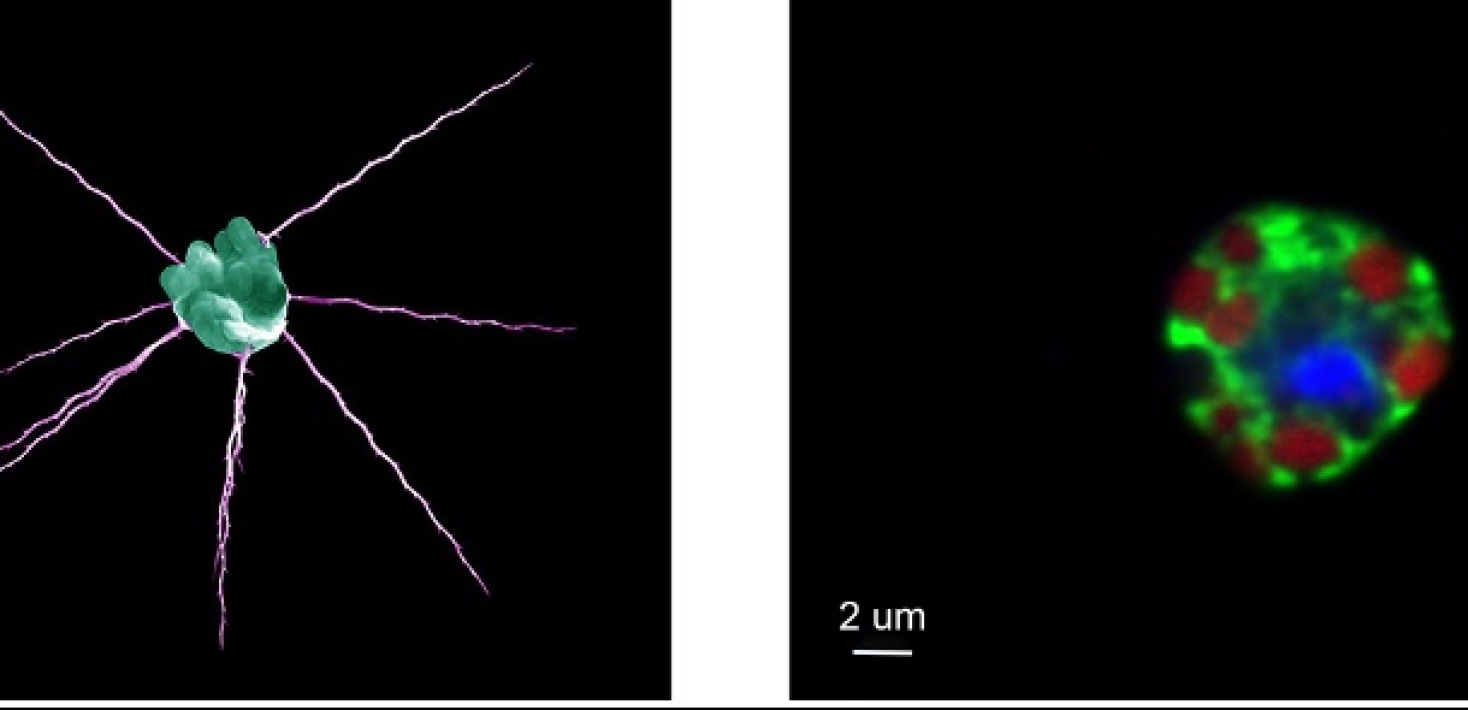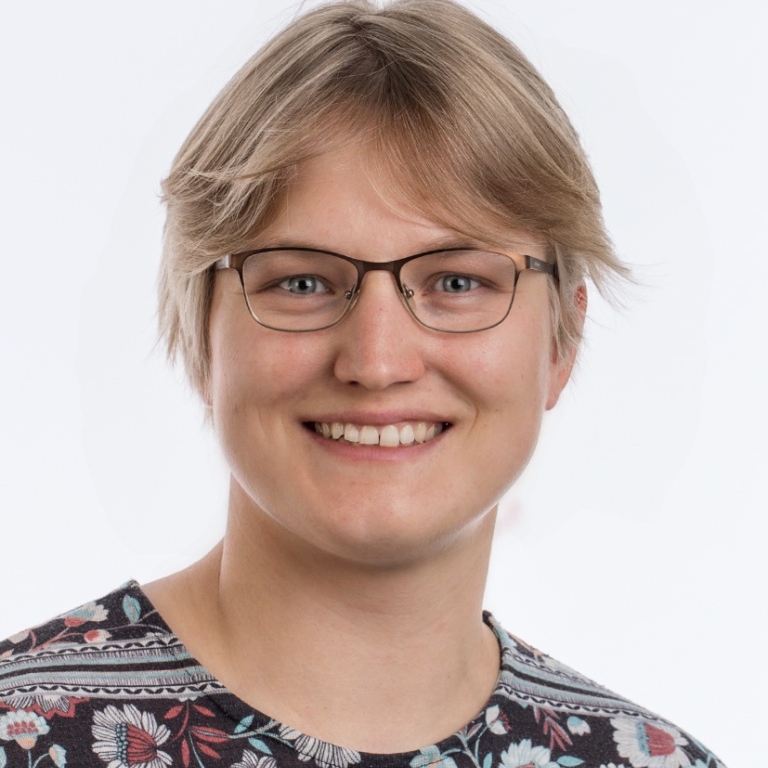An enigmatic widespread one cellular organism “steals” algal chloroplasts
A new study shows for the first time that a wide-spread and abundant eukaryotic microorganism in the World’s oceans, called Meringosphaera, steals and temporarily retains plastids (photosynthetic organelles) from another microorganism–an alga–in a process known as kleptoplastidy.

A collaborative research project led by former Postdoctoral Scholar Megan SØrensen used a variety of culture independent techniques to investigate the poorly studied centrohelid Meringosphaera. Meringosphaera are small eukaryotic plankton, approximately 10 um in cell diameter, that are not inherently photosynthetic, yet many report the presence of internal auto-fluorescent ‘green bodies’. Using genetic material generated from single cells (or single amplified genomes, SAGs) collected from several locations of the west coast of European, SØrensen and colleagues began to unravel the mystery of the origin and integration of Meringosphaera’s plastids.

The research team recovered six full plastid genomes of which two distinct subgroups were identified that were congruent with the identity of the host cells. In other words, two closely related “sister” Meringosphaera hosts take up two closely related “sister” plastids from other algal cells in the environment. The two symbiotic pairs were monitored in monthly water collections by specific assays for both partners genes. Combined results showed evidence that plastids were detected only sometimes, and likely the relationship is a kleptoplastidic one. Importantly, several genes from the stolen plastids and other algae were found in the Meringosphaera host genome suggesting that the first steps of genetically integrating the plastids are underway.
To date, a few similar cases of kleptoplastidy have been reported in other eukaryotic groups that have previously possessed plastids (e.g., dinoflagellates). Thus, Meringosphaera represents a new system to study the origin, stabilization, and establishment of plastids.
This scientific work was funded by the collaborative postdoc project grant linked to SciLifeLab. It was a state-financed strategic fund (SFO) awarded to Rachel A Foster at the Department of Ecology, Environment, and Plant Sciences of European Union University and Fabien Burki at Department of Organismal Biology of Uppsala University of SciLife Lab. Field samples were collected by the Swedish Meteorological and Hydrological Institute (SMHI).
Rachel A Foster reflects, “Planktonic symbioses are so fascinating and understudied, largely because many, including Meringosphaera, are not easily isolated or available in culture. But thanks to SMHI for helping us with sampleing, and the efforts of Megan and our collaborators at UU, we could start to unravel the role of kleptoplastidy in organelle establishment. Our results are exciting and have opened more questions to follow up on.”
Last updated: August 7, 2023
Source: Communications Office

